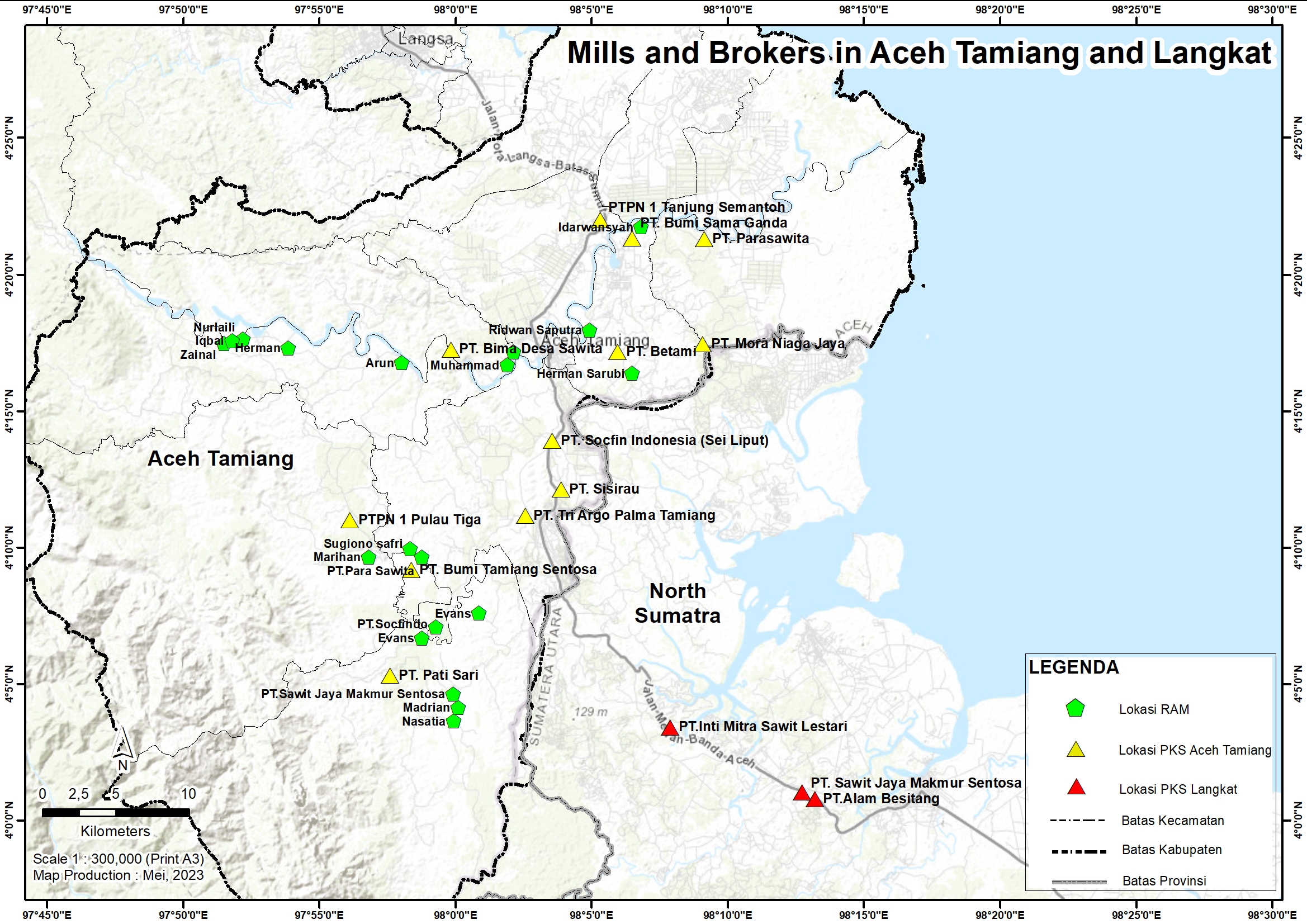New RAN video-short lays bare the murky path of illegal palm oil into the supply chains of global brands that the industry would rather remain hidden
We know that Conflict Palm Oil is a major driver of tropical deforestation. But the palm oil supply chain is intentionally murky so that no one person or company can be held accountable for the environmental crimes and human rights violations that occur along the way. That’s why we go undercover — to conduct in-depth field research that reveals exactly who’s doing the damage. And the evidence shows that the palm oil destroying critical rainforests in Indonesia is ending up in U.S. grocery stores. RAN has released a new video that shares the truth behind the industry destroying some of our most critical rainforests in the Rawa Singkil Wildlife Reserve located in the 6.5 million acre Leuser Ecosystem of Sumatra.
Across Indonesia, deforestation is caused by expanding palm oil plantations in the region. One of Indonesia’s deforestation hotspots is in the Rawa Singkil Wildlife Reserve in the Leuser Ecosystem which is located in the province of Aceh. The Rawa Singkil Wildlife Reserve is a globally important carbon bank and biodiversity hotspot. It’s actually referred to as the “Orangutan Capital of the World” because it has the highest record number of adult orangutans in one habitat. It’s so important to our climate and the local ecosystem that it’s nationally protected under Indonesian law. Despite being protected, the reserve is facing an onslaught of new destruction.
This growing crisis shows that the claims being made by global brands on efforts to address their impact on the climate and ending deforestation and destruction of peatlands in their supply chains simply can’t be trusted. It is crystal clear that the destruction of the primary forests in the Rawa Singkil Wildlife Reserve persists under their watch.
The problem is that the palm oil industry is expanding illegally within the Rawa Singkil Wildlife Reserve. Usually palm oil companies have to operate on government granted concessions of land––and even these are mired in controversy––but our team of investigators has uncovered a network of palm oil grown illegally outside of government concessions that has then ended up in the global supply chains of major brands that many of us have in our homes. We’re talking Head and Shoulders, Tide, Pantene, Oreos and a whole lot more. So how do we connect this destruction to these well known brands?
We know who’s illegally growing palm oil and in 2022 we published the evidence to prove it in our–– Carbon Bomb Scandals report. Using evidence obtained through field investigations, satellite imagery analysis and supply chain research, RAN’s investigation proved that palm oil produced in this protected nature reserve, in violation of corporate deforestation-free commitments, continues to make its way into the products sold by Procter & Gamble, Mondelēz, Nestlé, Unilever, PepsiCo, Colgate-Palmolive, Ferrero, Nissin Foods and other Consumer Goods Forum members. We caught a local businessman named Mr Mahmudin selling illegal palm oil grown inside the reserve to mills in the supply chains of these brands. He operates an illegal palm oil plantation inside the reserve and a second facility in the Ie Meudama village where the palm oil fruits are collected. Once these fruits are collected they get shipped off to surrounding palm oil mills and eventually sold into the global supply chain.
Palm oil supply chains are intentionally very murky with a lot of middlemen. To this day, brands–– and their suppliers like Wilmar, Golden Agri Resources and Apical of the Royal Golden Eagle Group––do not publish the details of where they source palm oil from––data showing the networks of middlemen and the mills in their supply chains. These companies don’t want us to be able to link them back to Conflict Palm Oil. This lack of transparency is a major liability in brands’ability to comply with the imminent legal requirements of the EU Deforestation Regulation (EUDR) and urgently needs to change. So we are doing something about it!
Up until recently we haven’t been able to pinpoint these middlemen. We’ve collected tons of data on the various plantations where palm oil is being grown and the mills that are selling them to the global market but the in-between steps have been blurry. Our investigation team has gone undercover to map out the palm oil middlemen, or Brokers as we call them, delivering palm oil from plantations inside the Leuser Ecosystem to nearby mills. These brokers are key to the industry because they’re responsible for laundering illegal and deforestation tainted palm oil into Global Supply chains.

Map showing the collection points (in green) used by middlemen––brokers––in the palm oil supply chains that are supplying palm oil to the Crude Palm Oil mills (Yellow) in Aceh Tamiang and Langkat. Part of the north-east of the Leuser Ecosystem is located in Aceh Tamiang and Langkat––the two districts that are in close proximity to refineries that supply major global brands.
By being able to fully map out the locations of the palm oil collection points, name the brokers and the mills that they supply to we can apply more targeted pressure to stop deforestation and the expansion of illegal palm oil in the Leuser ecosystem and tell companies like Procter and Gamble and Mondelez exactly who they need to suspend business with.
